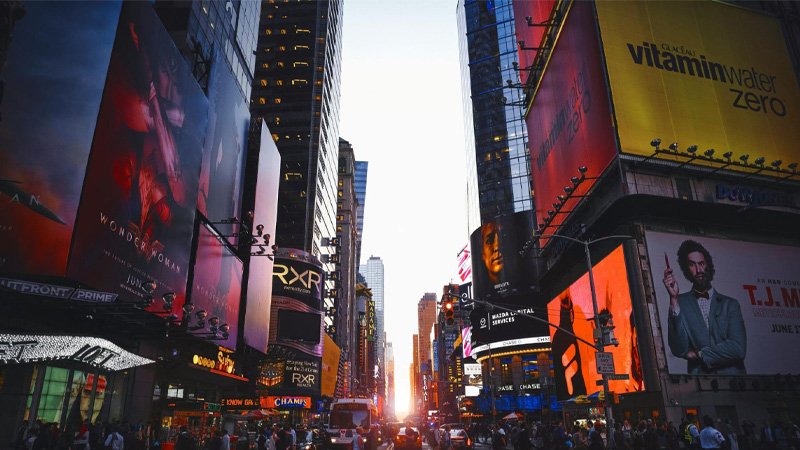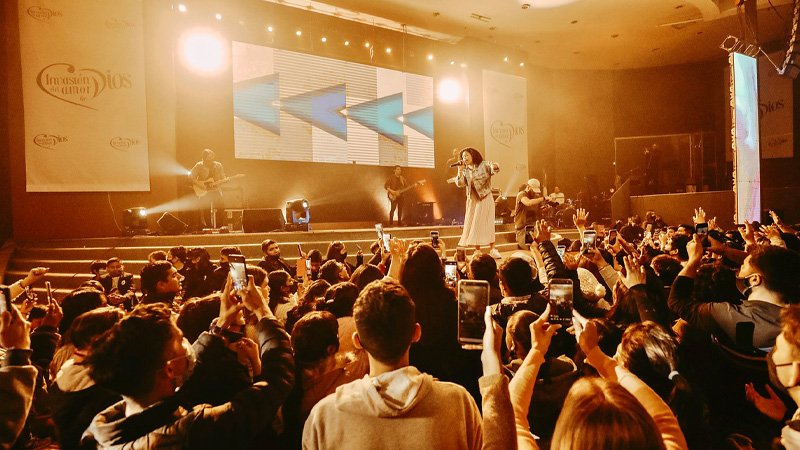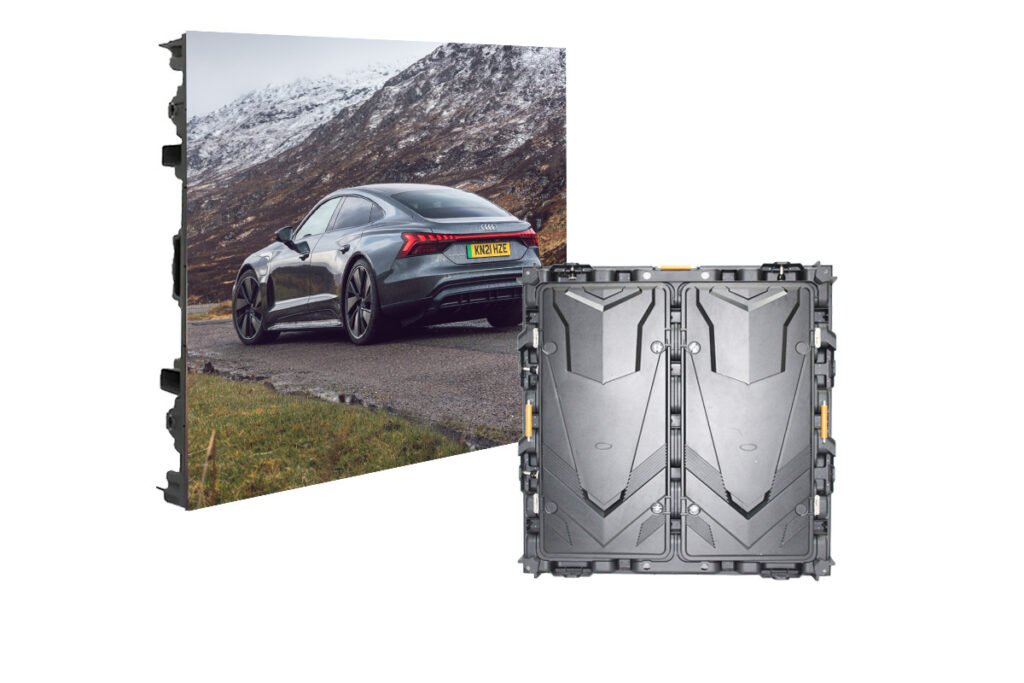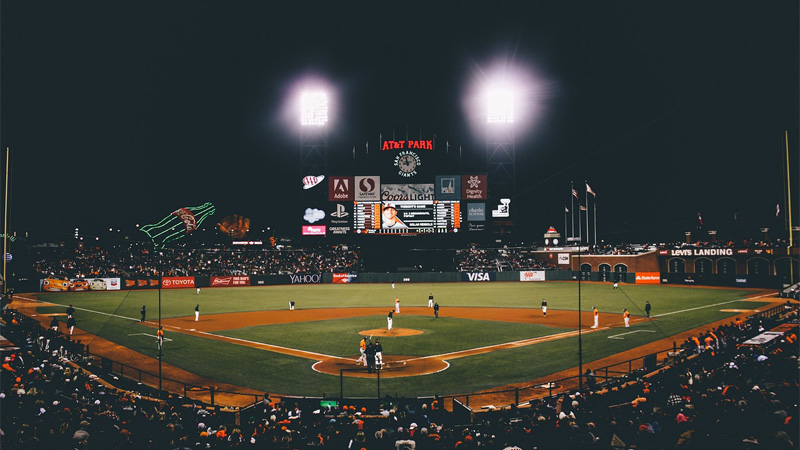Outdoor LED displays are powerful tools that anyone can use to advertise products, spread information about services, and capture an audience with entertaining visuals.
Several factors need to be considered when you’re choosing the right outdoor LED display board. In this article, we’ll outline the top factors that can impact your choice of outdoor LED displays and how to make the best decision for your needs.
1. What is an Outdoor LED Display?
An outdoor LED display is an electronic, flat-panel device with light-emitting diodes to display energy as pixels. Light-emitting diodes work to release energy as photons, displaying color based on the corresponding energy of those photons.
From this technology, LEDs can convert electricity to light and can generate a wide spectrum of colors at a lower power consumption. Because of its lower power consumption, it can offer a more streamlined, uninterrupted visual process for advertisements, video reels, and live streaming for events.
Unlike indoor LED displays, outdoor LED displays operate at a higher brightness, which allows the visuals to be less impacted by other light sources, such as sunlight. These LED displays are also more resistant to higher temperatures and are often waterproof, making them more resistant to imposing weather conditions. Due to their resistance to water and heat, they’re more customizable in outdoor settings and can make outdoor event planning easier for any venue.

2. Top Considerations When Selecting an Outdoor LED Display Board
If you’re seeking ways to enhance your brand’s visibility or give your audience a wonderful experience, it’s important to identify your business needs. Choosing an outdoor LED display board means assessing every part of the product so you can make an informed decision for your project. There are many considerations to consider, which include the following:
Environment and Location
Outdoor LED display boards are often exposed to the elements and need to be weatherproof. Most outdoor LED displays have special enclosures that seal against rain and other environmental factors. Their ability to resist rain, dust, and debris is determined by a rating system called Ingress Protection.
The IP rating determines the level of outdoor protection an LED display has outdoors. The first number, 1-6, refers to its protection against solid objects like dust. The higher the number, the more resistant it is to dust. The second number, ranging between 1 to 9K, rates its protection against liquids.
If you see a third number or letter attached, it’s a supplement used to inform the buyer of the product’s standards. This supplementary number can include if it uses a high voltage, has oil resistance, or is only applicable in certain weather conditions.
In ideal circumstances, outdoor LED displays’ IP rating should be between IP54 and IP65, as they provide better protection against water pressure, dust, and other sources of debris in many outdoor environments.
Brightness and visibility (Nits)
For outdoor LED displays, brightness is measured by NIT units. NIT is a measurement of brightness that a viewer’s eye can see from a screen. This system is based on what the eye perceives, so screens intended for outdoor viewing would need a higher NIT range. However, any outdoor light interference, such as direct sunlight, can affect the screen’s visibility, especially if the LED display has a lower NIT rating.
Depending on the location of your chosen venue or place of advertising, outdoor LED display boards should range between 3000 and 7000 NITS if exposed to direct sunlight. If your product is unable to produce enough brightness, shadows can appear on the screen, leaving your content looking dull.
Aspect Ratio and Resolution Size
The aspect ratio is another fundamental factor in how well an outdoor LED display performs in outside environments. Aspect ratio refers to the proportions between the width and height of an LED screen. A famous example of aspect ratio is 16:9, also called widescreen.
Most digital devices today use widescreen ratios due to their wider field of view. The less often used ratio is 4:3, its predecessor. The 4:3 ratio provides more vertical space, so if your content has more vertical detail or is text-heavy, then this ratio may provide more benefits.
However, your choice of ratio will depend on the type of content you’re producing, which can help you choose a higher resolution size for event venues and other public areas with frequent traffic.
Content Management
When choosing an outdoor LED display, always consider the ease of your content management system. If you plan on using your outdoor LED display board for an advertising campaign, then your content management system should be able to provide dynamic content that’s easily controllable from any location. Cloud-based CMS offers greater flexibility in that regard and can offer better data integration for third-party advertisements and displaying real-time information at a moment’s notice.

Quality and Durability
Outdoor LED display screens also require good materials and construction to ensure they are safe and durable. These LED displays should be constructed from weather-resistant materials that meet IP rating standards. The materials should also be able to display dynamic content within various weather conditions, including rain, sleet, snow, and high winds.
Additional features to consider with your outdoor LED display include surge protection, insulation, and compliance with any electrical safety procedures. Any specifications for the product should be easily accessible, as these displays represent a large investment for your business or project.
Energy efficiency
LED displays have a reputation for being energy-intensive and costly, especially for those using outdoor LED display boards for expansive marketing campaigns. However, many of today’s modern designs feature LED signage that’s more energy efficient.
In previous years, most display screens used to feature halogen, fluorescent, or incandescent sources of light that consumed energy at a high rate. One of the major benefits of LED screens is the ability to consume less energy at a higher brightness output, providing a longer lifespan.
However, the overall costs of your LED display will depend on your budget and the hours you intend to use your outdoor LED display board. When searching for an outdoor LED display, additional features such as brightness control and power-saving modes can help assist in budgeting for energy costs.
Installation and Maintenance Costs
Installation and maintenance costs are a hefty factor to consider for those looking to run long campaigns or manage a memorable outdoor event. In most circumstances, energy-efficient, high-quality LED displays can last between 50,000 and 100,000 hours, making them less likely to require replacements.
In cases of accidents, it’s important to purchase an outdoor LED display from a company that can provide official installation and repair services to protect your investment and meet any local regulations involved in the installation.
Permits and Regulations
Some cities or county governments will have specific requirements for outdoor signage. Depending on the regulations within your area, zoning codes and permit applications will vary. Before investing in a large outdoor LED display, you should work through the application and approval process first. By working with these legislations beforehand, you can avoid legal consequences for your outdoor signage.

3. The Crucial Role of Resolution in Large Outdoor LED Displays
Outdoor LED display boards rely highly on their resolution to produce clear results. Resolution is measured by the number of pixels present in the display’s design and the pixel pitch or the density of pixels in its resolution. A general rule to follow is the higher the resolution, the better the definition and clarity the display will provide. In LED display boards, its resolution will have a larger number of pixels in its matrix area, providing greater resolution for viewing purposes.
Alongside that, pixel pitch also impacts the quality of the resolution itself. Pixel pitch is the density of pixels within its matrix area. The smaller the pixel pitch, the greater the definition of its resolution. In large outdoor LED displays, the pixel pitch often ranges between 16mm to 30mm to produce a higher viewing distance, especially for venues such as outdoor concerts.
Choosing the right resolution for your project will depend on your location and how light interferes with your content’s visibility. Light interference from direct sunlight can also affect the visibility of the display itself. It’s important that when choosing an outdoor LED display board, you choose one that’s away from direct sunlight to improve its visibility.
4. What Affects an Outdoor LED Display Brightness?
Most outdoor LED displays have several factors to consider in their design, such as the total amount of light an object emits, pixel count, pixel pitch, and how much light the eye can perceive in outdoor settings. But beyond its specification, many outside factors can also impact the display’s brightness because even with a high NIT rating and good quality resolution, the display itself may falter due to its position, orientation, and the surrounding environment.
At LEDSINO, our largest option for outdoor LED displays is the FM960-Series. These outdoor displays offer a NIT range between 5500 and 10000 NITS and can be designed with resolution sizes ranging between P4 and P10mm. The FM960-Series, however, also offers adjustable display brightness that detects any light conditions present and a variety of pixel pitch options to help cater to different viewing experiences.
If your choice of outdoor LED display cannot adjust to its environment seamlessly, it will create more costs for your project. Your outdoor LED display should be applicable in any outdoor environment and durable in any weather, and the company you purchase your LED signage from should offer installation and technical support for safety and security. As a large investment, the company you purchase from should provide quality and assurance under any circumstance.

- Standard Modules Front/Rear Service
- Standard Size: 320x320mm/960*960mm
- High Precision Cabinet – Excellent Flatness
- With 3 Years Warranty and 5% Spare Parts
5. Get Help from LEDSINO (CTA)
Outdoor LED displays have more versatility than ever, offering wider resolutions, smaller pixel pitches, and greater visibility. At LEDSINO, we work to advance our products with the highest specifications so you can plan your outdoor campaign with peace of mind. When planning for an outdoor concert or an advertising campaign for your brand, LEDSINO can provide you with a worthwhile investment that will continue to stay bright in rain or shine.
Our popular outdoor LED modules are great options for any outdoor venue. They’re energy-efficient design is often seen used in public spaces, sports arenas, outdoor settings, and even as billboards delivering advertising with cutting edge visuals. Their durable waterproof design ensures they’ll go the distance and keep your business looking great for years to come.



